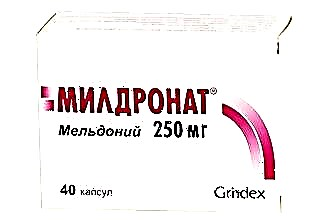A furuncle in the ear is a purulent inflammation of a hair follicle on the skin near or inside the organ of hearing. Accompanied by painful sensations for the patient, it is capable of provoking a variety of complications. A boil in the ear is especially dangerous for children; with untimely or incorrect treatment, it can even pose a threat to the child's life. Pyoderma (a group of diseases that include boils) accounts for about 30% of all skin diseases.
The causes of abscesses
 An abscess in the ear or behind the ear can be of a local one-time nature, or it can be part of an extensive disease of the body called furunculosis, in which abscesses occur throughout the body. Basically, the pathogenic factor is Staphylococcus aureus, which resides on human skin, but is activated only when a favorable environment arises for it. An ear boil can appear under the influence of many reasons, which can be both general and local.
An abscess in the ear or behind the ear can be of a local one-time nature, or it can be part of an extensive disease of the body called furunculosis, in which abscesses occur throughout the body. Basically, the pathogenic factor is Staphylococcus aureus, which resides on human skin, but is activated only when a favorable environment arises for it. An ear boil can appear under the influence of many reasons, which can be both general and local.
Common factors include:
- genetic predisposition to this disease;
- metabolic disorders, obesity;
- a consequence of diabetes mellitus and other autoimmune diseases;
- the presence of a staphylococcal or streptococcal infection in the body for a long time;
- reduced immunity due to antibiotic treatment or chronic diseases (tuberculosis, tonsillitis, pyelonephritis);
- transferred viral infection;
- hypovitaminosis;
- hormonal background (pregnancy, adolescence, disorders in the endocrine system, treatment with hormonal drugs).

Local factors are more likely to cause inflammation and can be as follows:
- microdamage to the skin, followed by the introduction of staphylococcal infection into the wound (this is mainly a consequence of improper hygiene procedures or the use of unsuitable items for this);
- blockage of the sweat glands outflowing duct with the addition of bacterial pathogenic microflora;
- frequent otitis media with the release of pus into the external canal;
- hypothermia and sudden changes in temperature;
- regular ingress of water (for example, in swimmers), which reduces the protective properties of the skin.
Symptoms of the disease
An abscess can be localized in different parts of the organ of hearing. There may be a furuncle of the external auditory canal, behind the ear, on the lobe. At the same time, the signs of all of them are quite similar.
If a boil develops in the ear, symptoms appear quickly:
 Discomfort and severe itching appear in the organ of hearing.
Discomfort and severe itching appear in the organ of hearing.- At the site of the formation of a neoplasm, with a simple examination, redness and swelling become noticeable.
- At the stage of suppuration, severe pain manifests itself, it can be shooting or pulsating, radiating to the eye, teeth, neck, temple. This is due to the proximity of the trigeminal nerve, which responds to the inflammatory process. When pressing on the tragus, pulling back the shell, chewing or talking, the pain intensifies, especially if the disease is localized on the anterior wall of the canal. Also, these signs clearly distinguish a boil from a common pimple.
- After some time, you can observe a red tubercle with a white core in the center - a capsule filled with pus.
- Inflammation can spread to the nearby tissues of the head and mastoid process, the lymph nodes localized in this area, thicken and become painful on palpation.
- With the acute development of the disease and the absence of adequate treatment, the body temperature sometimes rises (as a result of the rapid development of bacterial flora and intoxication of the body), chills appear, the patient loses his appetite and does not sleep well.
Stages of development of an abscess
 Boil from the moment of appearance to complete disappearance goes through several stages. Usually, if you do not take into account complicated cases, the abscess matures and opens within 3-4 days. Each of the stages affects the patient's health in its own way.
Boil from the moment of appearance to complete disappearance goes through several stages. Usually, if you do not take into account complicated cases, the abscess matures and opens within 3-4 days. Each of the stages affects the patient's health in its own way.
- The penetration of pathogenic microflora, the onset of the disease and the formation of infiltration (1-2 days). The patient feels unwell and discomfort, discomfort appears at the site of the lesion.
- The development of suppuration and death of the tissues surrounding the stem (about 2 days), which is accompanied by pressure on the nerves surrounding the follicle. Because of this, the patient feels severe pain radiating to the head area. The most difficult time for a person, performance decreases sharply, body temperature rises, irritability appears. Children are especially difficult to tolerate this stage, so you need to make sure that they do not damage the capsule and prevent the spread of infection throughout the body.
- Breakthrough of the skin, release of pus and recovery. After a boil breakthrough, the patient's well-being quickly improves and returns to normal within 1-2 days after the abscess is opened. The wound can heal up to 10 days.
Features of symptoms with different localization of the boil
 Depending on the site of inflammation, the symptoms of the disease may differ slightly and carry their own specific threats to humans:
Depending on the site of inflammation, the symptoms of the disease may differ slightly and carry their own specific threats to humans:
- The boil inside the ear is actually a form of otitis externa. If the abscess reaches a large size, it can practically block the ear canal and lead to temporary hearing loss. An attempt to independently open the suppuration on its own can end with the ingress of the infiltrate into the inner part of the organ, the development of serious otitis media and damage to the tympanic membrane.
- An abscess (boil) behind the ear often occurs due to inflammation of the sebaceous glands, which is facilitated by the presence of folds of skin behind the auricle, in which dirt and sweat accumulate. The danger of localizing inflammation in this place is that pus can enter the brain with the blood flow. Due to the large number of sebaceous glands, the boil in this place is especially painful, and the surrounding tissues can be very swollen. Moreover, it is here that he most often passes by himself, without the surgical intervention of a doctor and subject to the basic rules of hygiene by the patient.
 Furuncle of the outer ear. It is painful due to the fact that it is located on the cartilaginous tissue of the external or internal side, leading to edema of almost the entire organ. At the same time, due to the accessibility to the affected area, it is easier to carry out manipulations aimed at treatment with both traditional and traditional medicine.
Furuncle of the outer ear. It is painful due to the fact that it is located on the cartilaginous tissue of the external or internal side, leading to edema of almost the entire organ. At the same time, due to the accessibility to the affected area, it is easier to carry out manipulations aimed at treatment with both traditional and traditional medicine.- Furuncle on the earlobe. Due to the small size of the lobe, it swells a lot, reddens and hurts when touched. It is convenient to apply the necessary medicines. In this case, you need to be careful, since the spread of the infiltrate to adjacent hair follicles can lead to the formation of a carbuncle: inflammation of several hair follicles combined into one focus with the capture of subcutaneous tissue. Self-medication also often results in visible scarring, which is especially frustrating for women.

 Discomfort and severe itching appear in the organ of hearing.
Discomfort and severe itching appear in the organ of hearing. Furuncle of the outer ear. It is painful due to the fact that it is located on the cartilaginous tissue of the external or internal side, leading to edema of almost the entire organ. At the same time, due to the accessibility to the affected area, it is easier to carry out manipulations aimed at treatment with both traditional and traditional medicine.
Furuncle of the outer ear. It is painful due to the fact that it is located on the cartilaginous tissue of the external or internal side, leading to edema of almost the entire organ. At the same time, due to the accessibility to the affected area, it is easier to carry out manipulations aimed at treatment with both traditional and traditional medicine.

